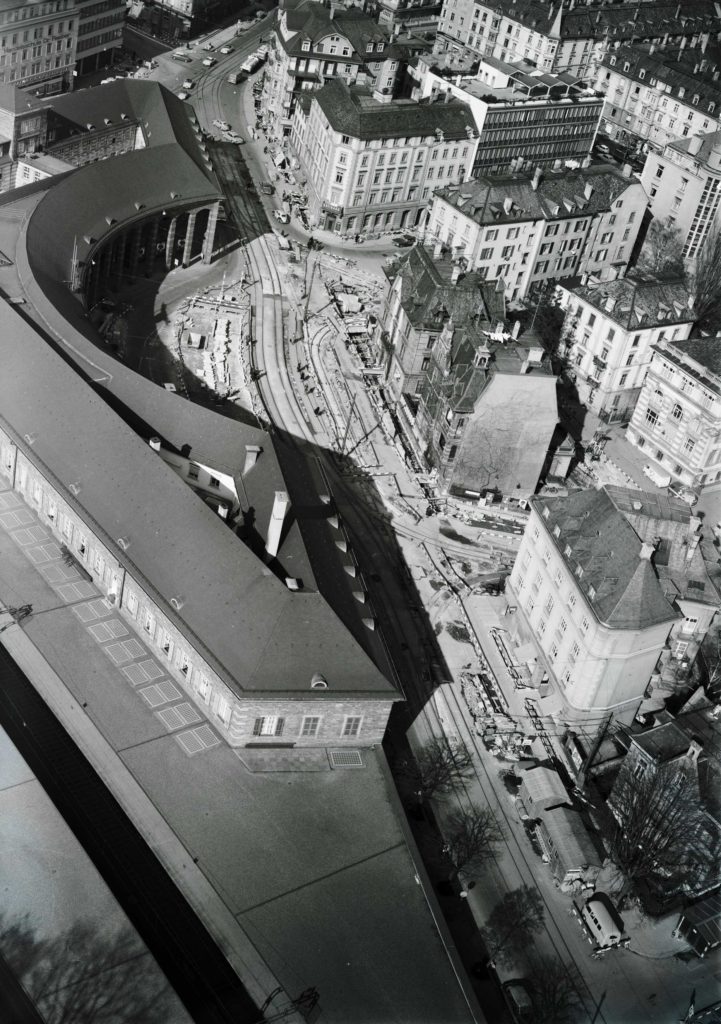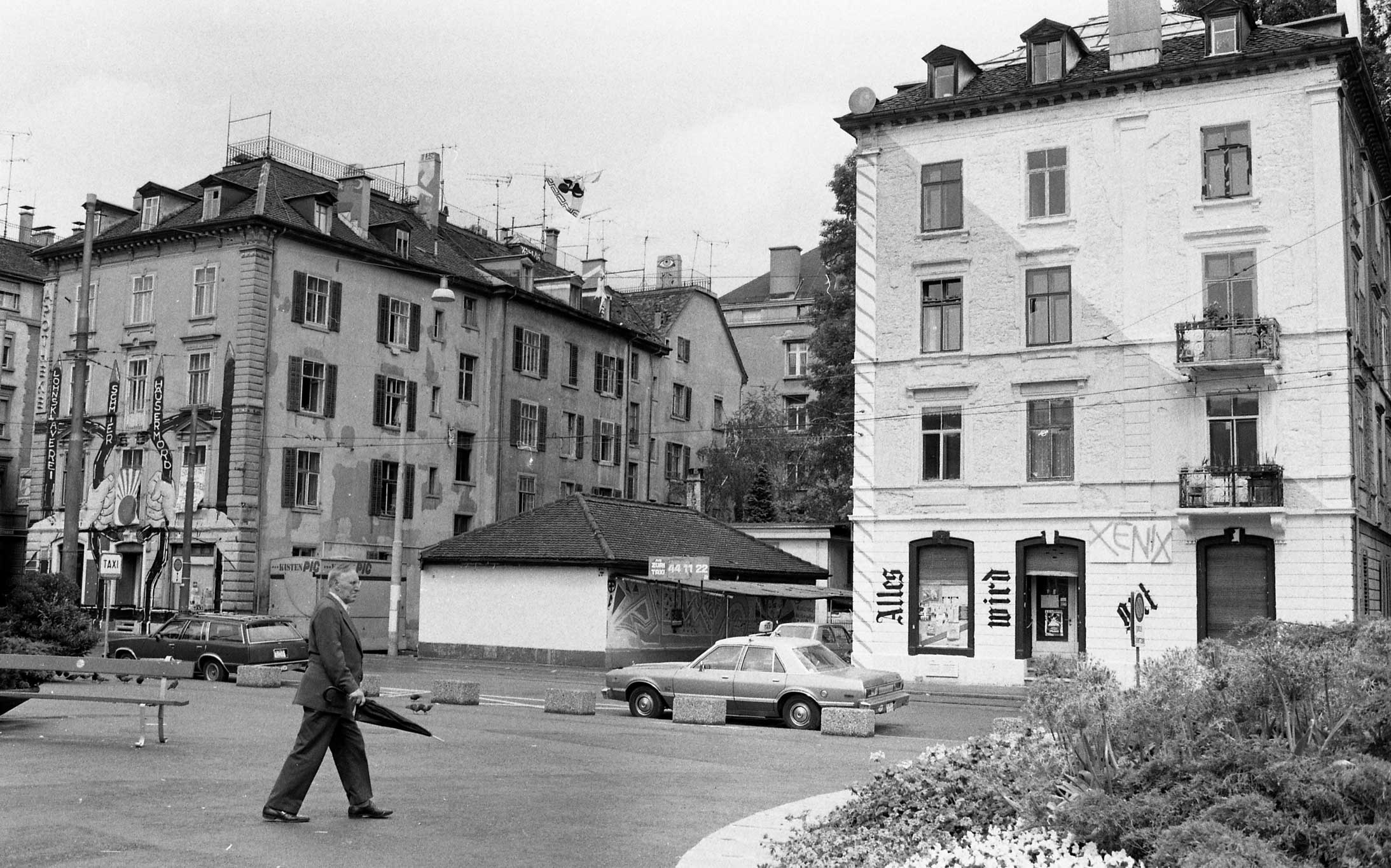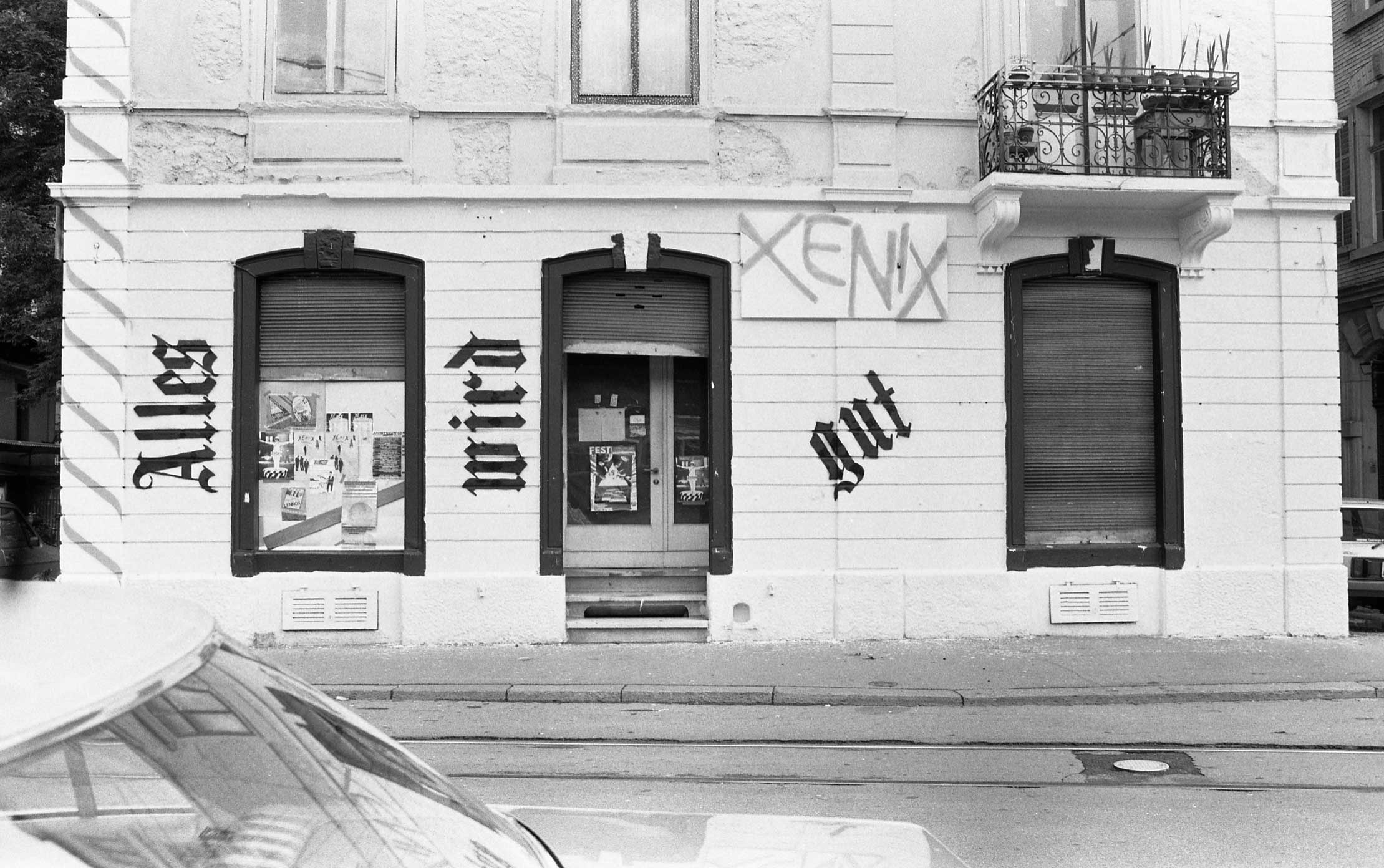Lavaterstrasse 9 Squat (1982)
Urban Murals and Signs of Rebellion
Urban Murals and Signs of Rebellion

In their claim for their right to city, Zürich squats relied heavily on the painted facade as a form of visual protest, contributing to what Beat Suter calls a “rebellion of the signs.” Together with graffiti, Urban Murals were used to express criticism and opposition to social norms. For Suter these signs are the result of the ‘urban crisis,’ being the crystallized expression of rebellion and subversion. One of the many examples of this use of the Urban Mural can be observed in the case of the squat of Lavaterstrasse 9. On May 15 and 16 of 1982, after several failed attempts to avert the destruction of their home, the squatters painted the façade facing the Tessinerplatz at Bahnhof Enge, a heavily frequented public space. They transformed the old and decrepit facade into an oversized Zürich banner, using blue and white paint. In addition, using the typefont of the Tagesanzeiger magazine (the legal owners of the building) they wrote “Alles wird Gut” – “everything will turn out alright”. In view of the looming destruction of the building, such an optimistic statement can only be understood as cynical commentary. By using the colours of the flag of Zürich, the squatters also implied that by destroying the building, a part of Zürich itself would be destroyed. In the end, not everything turned out alright, and the Lavaterstrasse 9 building, as well as neighbouring buildings, were torn down in December of 1982, and were soon replaced by a large insurance company building complex.
Schmidt-Brümmer, Horst, and Horst Schmidt-Brümmer. Wandmalerei zwischen Reklamekunst, Phantasie und Protest. Köln: DuMont, 1982. Print. DuMont Taschenbücher 122.
Stahl, Johannes. “Graffiti: zwischen Alltag und Aesthetik.” Scaneg Verlag, 1990. Print. Beiträge zur Kunstwissenschaft Bd. 36.
Suter, Beat. “Graffiti: Rebellion der Zeichen.” RGFischer, 1994. Print.
Image 1 –
Building at the Lavaterstrasse
Gertrud Vogler, Sozialarchiv Zürich

Image 2 –
‘Alles wird gut’
Gertrud Vogler, Sozialarchiv Zürich
